BikeBond
"Have you been craving quality family time on a cycling adventure after a busy week at work?"

My role
Participated in group discussions on personas and scenarios.
Independently identified opportunities and designed prototypes.
Project
University project
Timeline
2 weeks, 2022
Tools used
Figma, Adobe Photoshop, Procreate
Introduction
Project overview
This project focuses on designing a mobile app to support and assist cyclists. Based on the provided persona, the aim is to understand their needs and challenges and identify opportunities to improve their cycling experience.
Discussion
Insights from persona discussion and analysis
Efficient Route Planning: Busy cyclists need straightforward route planning to simplify their journeys and save time.
Family-Friendly Routes: Routes should cater to children's needs and include appropriate stops, such as rest areas and restaurants.
Cycling Safety: Ensuring safety is vital due to the higher risks compared to driving. Key factors include weather conditions, helmet use, and overall safety awareness.
The persona provided

User journey map:
Prioritising cycling routes and safety

Opportunities for the App:
Pre-Trip Preparation: Route planning, weather forecast, essential equipment checklist, and access to emergency contacts.
During the Ride: Suggestions for breaks and meals, navigation, and assistance for unexpected situations.
Post-Ride: Review cycling data, and share and communicate with other users.
Design development
Key Functional Pages in Crazy 8 Sketches
When sketching, the core pages considered were those crucial, including route planning, navigation, rest reminders, accident assistance, calorie monitoring, and post-ride sharing and communication.

Flow charts

Route Planning:
Users can customise routes with weather updates and gear reminders based on destination and time. They can save time by selecting and modifying pre-generated routes based on preferences, history, or community shares.
Map:
Provides navigation and alerts users when to take a break or when weather conditions change.
Community:
Users can share trips and browse tips for route planning.
Wireframe
The wireframe includes key screens. It emphasises safety by minimising clutter and providing clear, actionable information.
The navigation screen features a help button for quick emergency access. To avoid accidental SOS calls, users must confirm their request on a secondary screen.


Prototype of BikeBond app
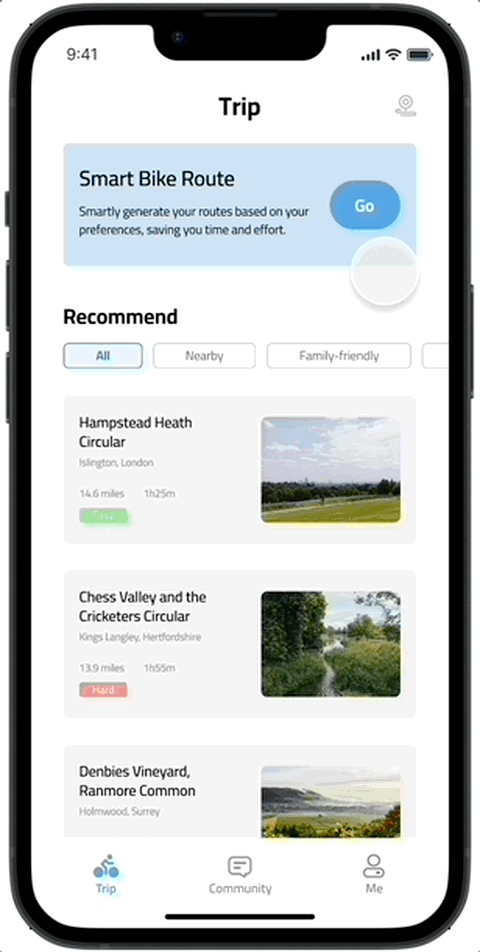
Effortless cycling route planning
-
Set cycling preferences and destination to receive multiple personalised route recommendations.
-
Automatically generate a packing checklist for each route, customisable to fit individual needs.
-
Organise routes into a time-based schedule for viewing.
Build a route with real cyclist insights
-
Browse travel experiences shared by other riders and the system for practical and inspiring ideas.
-
With a single tap, create a personalised cycling plan and adjust waypoints to match specific interests.
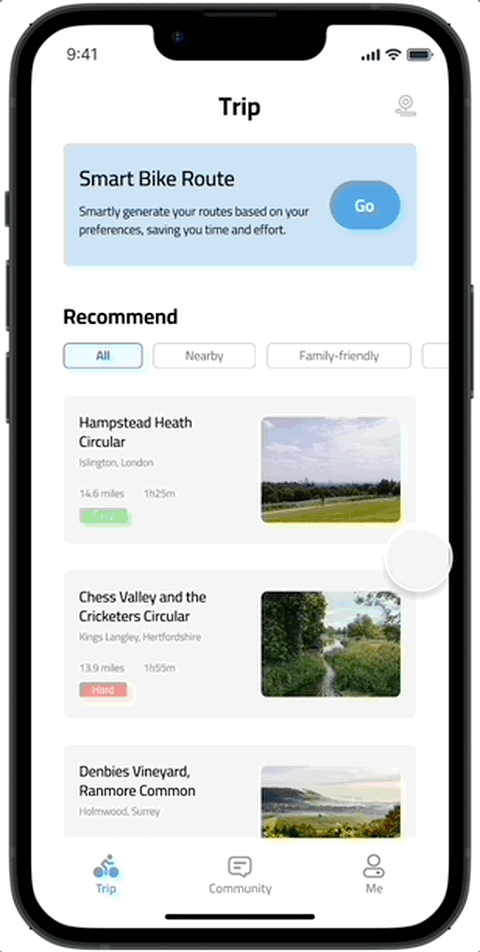

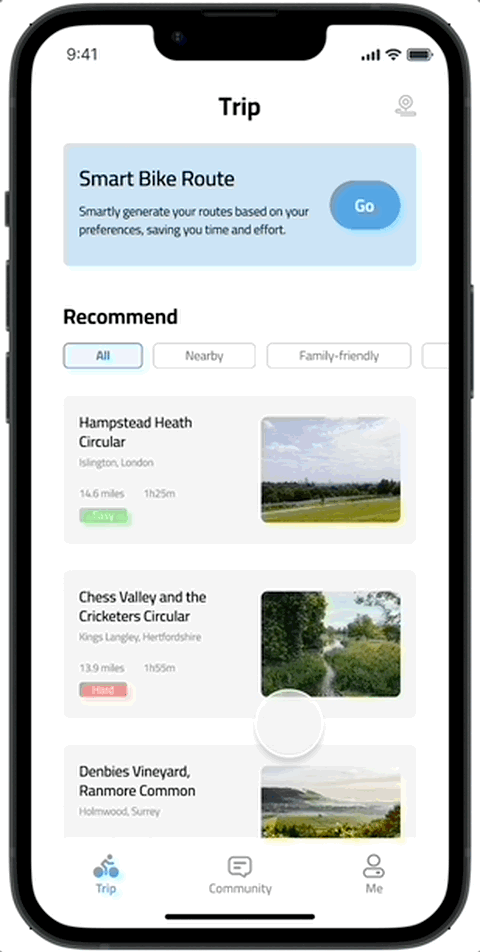

Maintain a comfortable cycling rhythm
-
Set rest reminders to support an ideal pace, with alerts as needed.
-
Receive live weather updates to stay prepared for changing conditions along the route.
-
Suggest nearby rest stops during breaks, allowing for flexible route adjustments.
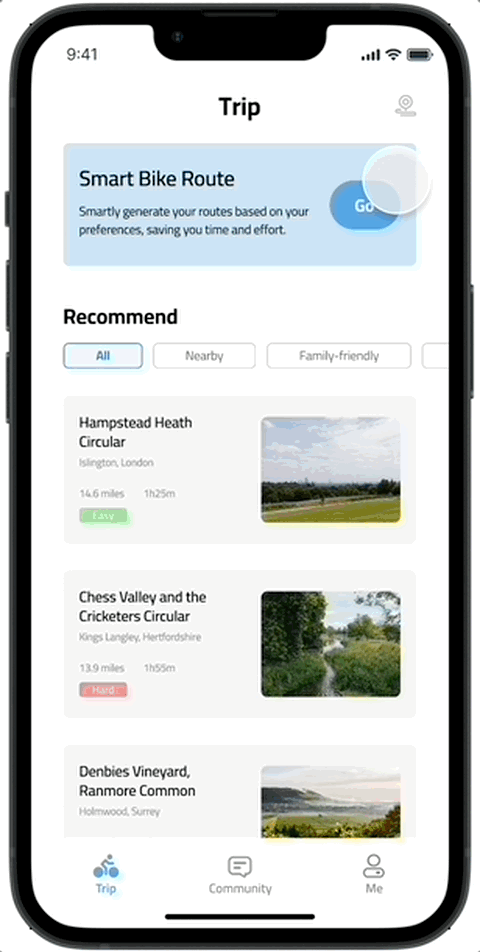
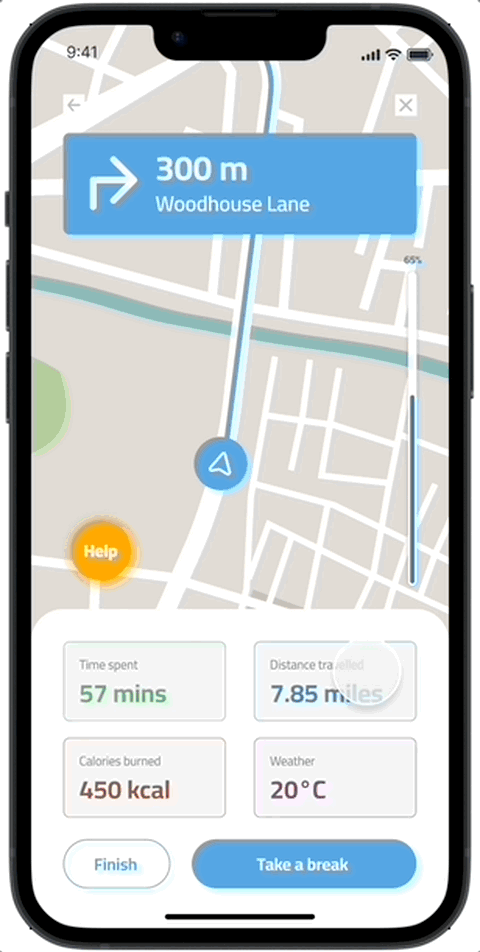
Emergency help in seconds
-
Tap the Help button if an emergency arises, leading to a secondary confirmation screen to prevent accidental presses.
-
Quickly connect to emergency services through the SOS button for immediate assistance.
Step-by-step support for minor issues
-
Access clear, first-response guidance for minor injuries or bike issues to prevent escalation.
-
Provide video tutorials for hands-on support, and locate nearby assistance points if needed.
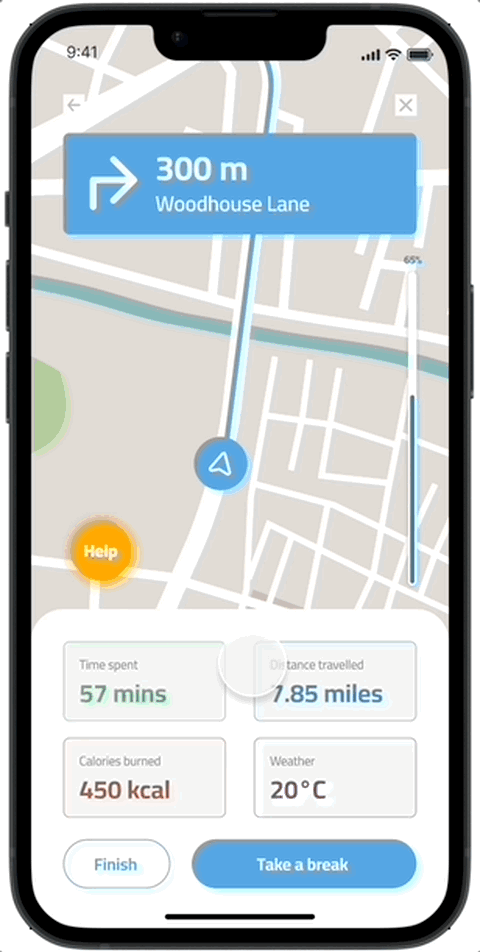
Project takeaway
Detailed insights from high-fidelity prototypes enhance user experience
This project underscored the importance of high-fidelity prototyping in enhancing user experience. High-fidelity prototypes effectively simulate real usage scenarios, helping to reveal details that are often difficult to foresee in the conceptual phase. This process ensures the design’s operability and smooth user experience.
Through simulated interactions to capture user psychology, it provides more effective functional support, ultimately fostering user habits.
In this project, the user journey map was created based on the provided persona, but due to time limitations and a lack of research data, it affected the usability of the design.